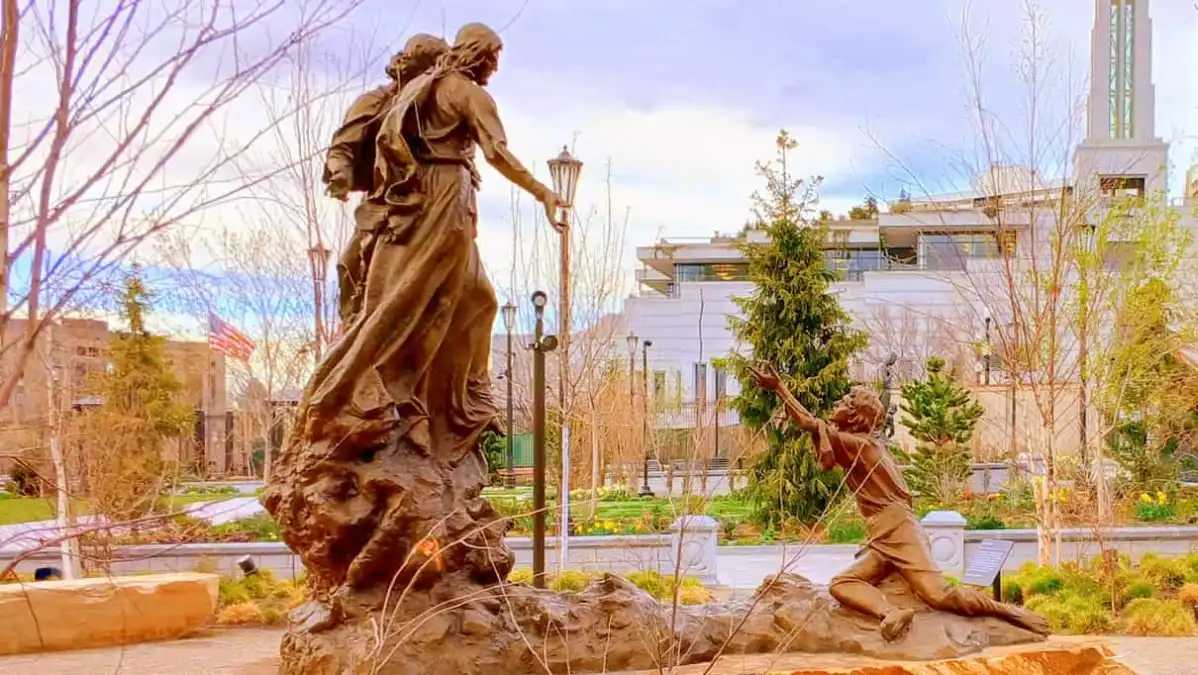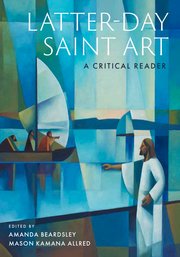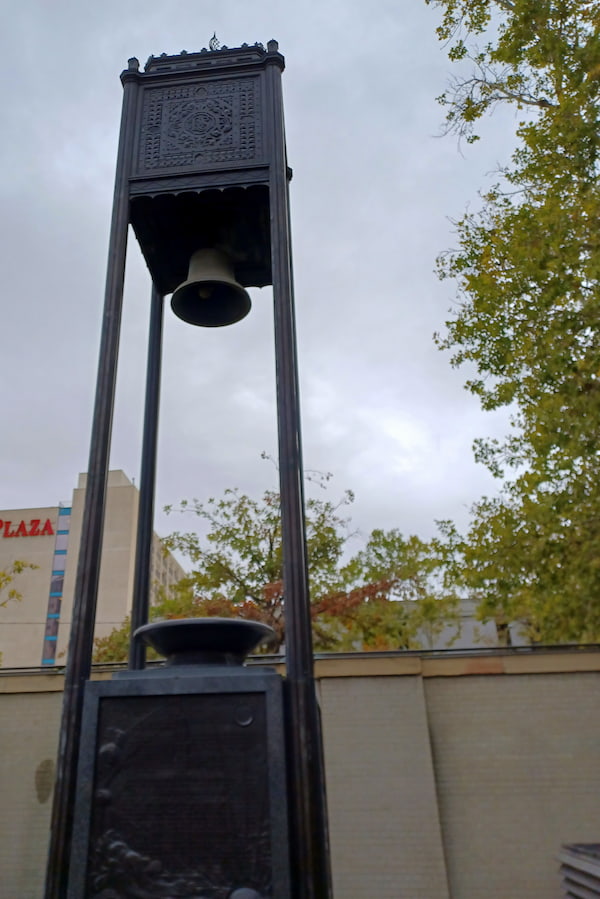Author: Chad Nielsen
-

Canonization, Part 1: Functional Canon to Formal Canon
Canonization is a fascinating process. And with an open canon, Latter-day Saints have the potential to expand books of scriptures like the Doctrine and Covenants and Pearl of Great Price. The process of expanding the canon is a rare event in The Church of Jesus Christ of Latter-day Saints, especially since the 1870s, but some…
-

13th International Art Competition Opens Today
The 13th International Art Competition exhibition at the Church History and Art Museum in Salt Lake City opened this morning. The theme of the competition is based on Doctrine and Covenants 81:5: “Wherefore, be faithful; stand in the office which I have appointed unto you; succor the weak, lift up the hands which hang down,…
-

A New Look at the 1832 Account of the First Vision
The 1832 account of the First Vision has always been treated as the black sheep of the family when it comes to contemporary accounts of that event. It is the most unique out of the accounts in several ways. Kyle Beshears recently published a chapter, giving an important explanation of some of those differences. He…
-

A Review: Latter-day Saint Art: A Critical Reader
Latter-day Saint Art: A Critical Reader is an excellent resource and insightful journey. The book aspires to be “the first expert critical treatment of Mormon visual art”, and it offers a breadth and depth that live up to that ideal. The volume includes twenty-two essays by scholars from various disciplines, perspectives, and backgrounds who offer…
-
A History of Young Women’s Organizations in the Church
The Church Historian’s Press recently published a history of the Young Women’s organization in the Church entitled Carry On: The Latter-day Saint Young Women Organization, 1870–2024. In connection with the release of this landmark study, Lisa Olsen Tait discussed the book in a recent interview at the Latter-day Saint history blog From the Desk. What follows…
-
Samuel Weber on Adam-God Doctrine
One observation about Brigham Young—particularly when it comes to his most controversial ideas, like the Adam-God teachings—is that he tended to take ideas from Joseph Smith and then amplify them. The priesthood and temple ban on individuals with black African ancestry, for example, can be seen as an expansion of things Joseph Smith accepted and…
-
The Voice of the Lord: A Review
BYU published a few books late last year in connection with the Doctrine and Covenants. Among these is The Voice of the Lord: Exploring the Doctrine and Covenants, edited by Alexander L. Baugh. The book is a collection of essays previously published by BYU in a variety of forums (Sydney Sperry symposium publications, Religious Educator…
-
On a New Edition of Teachings of the Prophet Joseph Smith
When I was on my mission, there were a few hot commodities on the book market that most of the missionaries wanted to get their hands on. Foremost among them were Teachings of the Prophet Joseph Smith and Joseph Smith: Rough Stone Rolling, with bookstores in Nauvoo, Illinois being the location in my mission where missionaries could…
-
A Review: Eduardo Balderas: Father of Church Translation, 1907–1989
I love finding out about key people in the history of the Church of whom I was previously unaware. Signature Books’s latest entry in its Brief Mormon Lives project, Eduardo Balderas: Father of Church Translation, 1907–1989, by Ignacio M. Garcia, is a great example of this.
-
On Section 25
The reading associated with this week in “Come, Follow Me” includes section 25 of the Doctrine and Covenants, the revelation addressed to Emma Hale Smith. Luckily, the Latter-day Saint history blog From the Desk published an interview with Robin Jensen on that very subject, including a great discussion about how the revelations were a collaborative…
-
A Review: On the Overland Trails with William Clark: A Teamster’s Utah War, 1857-1858
The Utah War is a subject of ongoing interest in the history of Utah and the years leading up to the American Civil War in the United States. As a Latter-day Saint who was raised in Utah, I’ve generally been introduced to the perspective of the Latter-day Saints rather than the rest of the nation.…
-

The Former Bell at Temple Square
The Church recently announced that “The southwest corner of Temple Square has reopened to the public. Landscaping is still underway, but visitors can enjoy seeing three newly restored monuments.” As I have walked into the Tabernacle for rehearsals of the Bells at Temple Square each week, I have been a bit sad to see that…
-
Joseph Smith as a Visionary: A Review
The latest offering from the Brigham Young University Religious Education Symposium in Honor of Sidney B. Sperry is Joseph Smith as a Visionary: Heavenly Manifestations in the Latter Days. Joseph Smith, Jr. is known for experiencing several visions, such as the First Vision, the visits of the Angel Moroni, the Vision of the Three Degrees…
-
The 1930s Crisis in the Church in Mexico
The history of the Church around the world is still a developing field and while Mexico is one of the countries that has received attention, Fernando Gomez‘s A Documentary History of the Church of Jesus Christ of Latter-Day Saints in Mexico, 1875-1946 shows that there is still more to learn and discover about the history of…
-
A Review: The Doctrine and Covenants Study Guide: Start to Finish
As I’ve been working on my annotated Doctrine and Covenants this year, one resource I’ve enjoyed reading is The Doctrine and Covenants Study Guide: Start to Finish (Salt Lake City: Deseret Book, 2024), ed. Thomas R. Valletta. The book is formatted as the text of the Doctrine and Covenants with comments in wide margins and…
-
A Review: Seven Visions: Images of Christ in the Doctrine and Covenants
The recently-published book Seven Visions: Images of Christ in the Doctrine and Covenants by Adam S. Miller and Rosalynde F. Welch is a fantastic opportunity to listen in on a conversation between two brilliant theological minds as they explore seven different sections of the Doctrine and Covenants with a Christological focus. The book is structured as…
-
Annotated Doctrine and Covenants, 10 – 19
Continuing my series of annotated and formatted text of the Doctrine and Covenants, here are D&C 10 – D&C 19. As noted before, be aware that this is still a very rough draft based on the 1921 edition (for copyright reasons). I have a lot of work to go before I plan to look into…
-
A Review: Seeing: Themes in the Doctrine and Covenants
The seventh and final book out of the Themes in the Doctrine and Covenants series that I read is the one by Mason Kamana Allred on Seeing. This one and Philip Barlow’s entry on Time seemed like the most strange or esoteric topics in the series, but like Barlow’s book, Allred’s offers interesting insight and…
-
Who Translated the Book of Mormon?
What if the Book of Mormon was translated from an ancient language into modern English, but it wasn’t God or Joseph Smith who did the translation? If so, did Moroni translate the Book of Mormon? That’s the very theory that Roger Terry has suggested, based on Royal Skousen’s research into the Book of Mormon. He…
-
A Review: Divine Law: Themes in the Doctrine and Covenants
The sixth out of the seven books in the Themes in the Doctrine and Covenants series that I read is the one by Justin Collings on Divine Law. I admit that this one left me pleasantly surprised. I was expecting some sort of lawyerly analysis of how the commandments in the Doctrine and Covenants create…
-
Portuguese Panic for the Book of Mormon
A key moment in the Church’s establishment in different locations and cultures—including among countries like Brazil, where the Church officially has over one million members—is the translation of the Book of Mormon. Especially in earlier years, the effort was performed by missionaries with rudimentary knowledge of the language working with locals to create the translation,…
-
Annotated Doctrine and Covenants, 1 – 9
I mentioned previously that my big project for the year associated with Come, Follow Me is working on an annotated Doctrine and Covenants and closely related content. For this part of the project, I am going through the assigned reading each week and comparing every major edition of the text that I can find (including those…
-
A Review: Time: Themes in the Doctrine and Covenants
Family. Isn’t it about … time? Yes, and so is the Gospel in general, according to Philip L. Barlow.
-
A Review: Divine Aid: Themes in the Doctrine and Covenants
The fourth out of the seven books in the Themes in the Doctrine and Covenants series that I read is the one by Amy Easton on Divine Aid. As the title implies, the book posits that a repeated theme in the Doctrine and Covenants is divine aid, offered in a variety of ways. As with…
-
The Impact of Julian of Norwich
The woman known as Julian of Norwich was a mystic and a visionary who offered a theology that was focused on God’s love. She is a somewhat obscure figure, but one who is worth learning about. To that end, Fiona Givens discussed Julian of Norwich in a recent post at the Latter-day Saint history blog From…
-
A Review: Revelation: Themes in the Doctrine and Covenants
Continuing my reviews of the Themes in the Doctrine and Covenants series by Maxwell Institute, we come to the one on Revelation by Janiece Johnson. Of all the books in the series that I’ve read so far, this one is the one that leans the most heavily into the devotional and practical side of the…
-
Textual changes in Joseph Smith—History
My big project for the year associated with Come, Follow Me is working on an annotated Doctrine and Covenants and closely related content. For this part of the project, I am going through the assigned reading each week and comparing every major edition of the text that I can find (including those available through the Joseph…
-
The Adventures of Jacob Hamblin
With American Primeval, Netflix has once again put Mormonism in its sights as the subject in a drama, this time including the Mountain Meadows Massacre (the latest in a long line of portrayals of that event). While that event casts a long shadow over nineteenth century Mormonism’s experience in the western United States, there are…
-
A Review: Agency: Themes in the Doctrine and Covenants
As I mentioned recently, I’ve been excited about the Maxwell Institute’s “Themes in the Doctrine and Covenants” series. So far, I’ve read four books out of seven, and the entry by Terryl L. Givens on Agency has been my favorite. It’s a beautiful blend of theological and devotional reflection that leans heavier into the comparative…
-
A Review: Redeeming the Dead: Themes in the Doctrine and Covenants
The BYU Maxwell Institute has followed up their previous series of Brief Theological Introductions to the Book of Mormon with a similar series focused on Themes in the Doctrine and Covenants. I’ve been excited about them since I heard about them a couple years ago at a Global Mormon Studies conference, so I was very…
